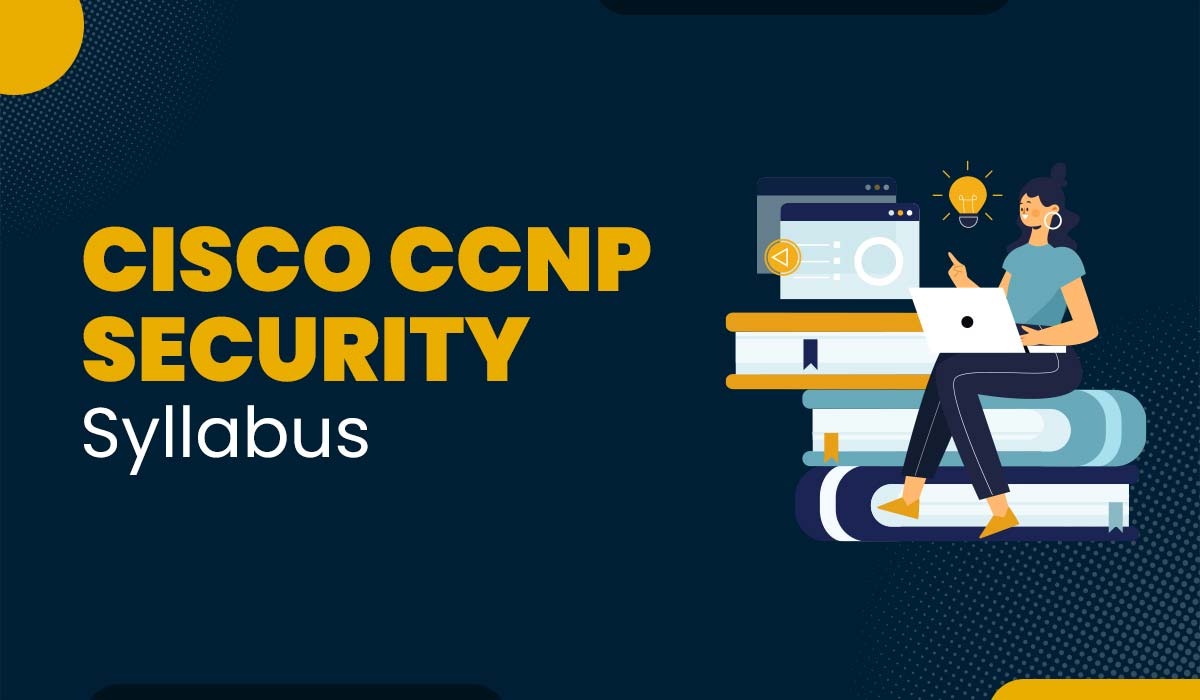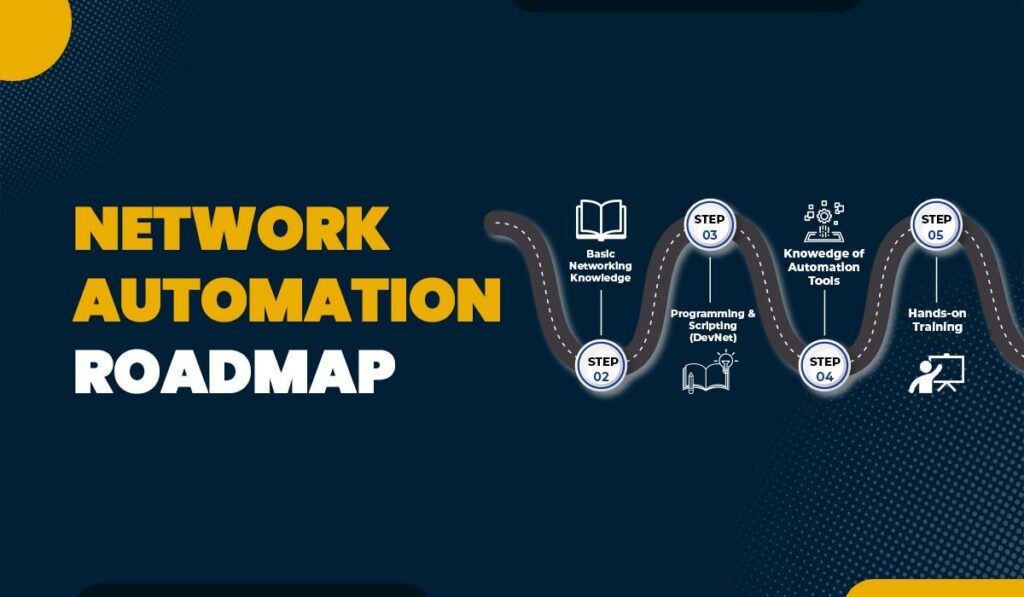Introduction
The Cisco CCNP Security Certification is a highly regarded initiative for professionals who desire to find and protect the organization’s network and information. One of the most basic and essential exams required for this certification is the CCNP Security 350-701 SCOR v1.1 so called “Implementing Cisco Security Solutions”, which tests the ability to design, deploy, and maintain a security infrastructure. This blog post will focus on breaking down all the details that are included in the exam i.e., CCNP Security Syllabus so that you can prepare yourself well.
To prepare yourself for the CCNP Security Core Exam, you need to undergo comprehensive training. PyNet Labs’ CCNP Security Core Training covers the Cisco CCNP Security Syllabus and enhances your understanding of security concepts with hands-on experience and practical scenarios. Let’s now discuss the official syllabus of CCNP Security Core (SCOR).
CCNP Security Syllabus Version 1.1
Let’s look into some of the key topics covered in the 350-701 SCOR v1.1 Cisco CCNP Security Syllabus.
The CCNP Security Certification syllabus is distributed into six sections. These are:
- Security Concepts
- Network Security
- Securing the Cloud
- Content Security
- Endpoint Detection and Correction
- Secure Network Access, Visibility, and Enforcement
| Section | Weightage | Objectives |
|---|---|---|
| Security Concepts | 25% | 1. Describe the typical threats faced by on-premises, hybrid, and cloud environments. 1.1. Cloud: Data breaches, Dos/DDoS, etc. 1.2. On-premises: Common threats on the network include viruses, SQL injection, DoS/DDoS attacks, malware, trojans, phishing, rootkits, man-in-the-middle attacks, and cross-site scripting. 2. Compare common security vulnerabilities such as software bugs, weak and/or hardcoded passwords, OWASP top ten, missing encryption ciphers, buffer overflow, path traversal, cross-site scripting/forgery. 3. Northbound and Southbound APIs in SDN architecture. 4. Cloud: data breaches, insecure APIs, DoS/DDoS, compromised credentials 5. Security intelligence involves creating, sharing, and using information to enhance security. 6. Cryptography components include methods like hashing, encryption, PKI, certificate-based authorization, IPsec, NAT-T IPv4 for IPsec, SSL, and preshared key. 7. Describe the controls used to protect against phishing and social engineering attacks. 8. Compare site-to-site and remote access VPN deployment types and components such as virtual tunnel interfaces, standards-based IPsec, DMVPN, FlexVPN, and Cisco Secure Client including high availability considerations. 9. Explain Cisco DNA Center APIs for network provisioning, optimization, monitoring, and troubleshooting. 10. Understanding basic Python scripts that can be used to interact with Cisco security device APIs. |
| Network Security | 20% | 1. Describe the components, capabilities, and benefits of NetFlow and Flexible NetFlow records. 2. Compare Network security solutions that further assist in providing firewall services along with intrusion prevention. 3. Configure and verify network infrastructure security methods. 4. Describe deployment models of network security solutions and architectures that provide intrusion prevention and firewall capabilities. 4.1. Device hardening of network infrastructure devices focusing on their management functions, control plane, and data plane. 4.2. Layer 2 security methods (network segmentation with the help of VLANs, port security, ARP inspection, storm control, private VLANs, DHCP snooping, and protections against MAC spoofing, ARP spoofing, VLAN hopping, STP attacks, and rogue DHCP attacks). 5. Implement segmentation, access control policies, AVC, URL filtering, malware protection, and intrusion policies. 6. Implement management options for network security solutions (single vs. multidevice manager, in-band vs. out-of-band, cloud vs. on-premises). 7. Configure AAA (Authentication, Authorization, and Accounting) for network and device access including TACACS+ and RADIUS. 8. Set up secure network management of infrastructure and perimeter devices including SNMPv3, RestConf, authenticated NTP, NetConf, secure Syslog, and APIs. 9. Configure and verify VPNs for both site-to-site and remote access. 9.1. Site-to-site VPN using Cisco routers and IOS. 9.2. Use Cisco AnyConnect for remote access VPN connections. 9.3. Debugging commands can help monitor and troubleshoot the establishment of IPsec tunnels. |
| Securing The Cloud | 15% | 1. Identify security solutions for cloud environments. 1.1. Cloud service models including IaaS (NIST 800-145), SaaS, and PaaS. 1.2. Public, private, hybrid, and community clouds 2. Compare security responsibility for the different cloud service models. 2.1. Security assessment in the cloud. 2.2. Patch management in the cloud. 3. Describe the concept of DevSecOps (Secure software development, container orchestration, and CI/CD pipeline). 4. Implementing data security as well as application in cloud environments. 5. Identifying security capabilities, policy management, deployment models in order to secure the cloud. 6. Describe application and workload security concepts. 7. Configure cloud logging and monitoring methodologies. |
| Content Security | 15% | 1. Implement traffic redirection and capture methods for web proxy. 2. Compare the components, capabilities, and benefits of on-premises, hybrid, and cloud-based email and web solutions (Cisco Secure Email Gateway, Cisco Secure Email Cloud Gateway, and Cisco Secure Web Appliance). 3. Describe web proxy identity and authentication including transparent user identification. 4. Configure and verify web and email security deployment methods to protect on-premises, hybrid, and remote users. 5. Configure and verify web security controls on Cisco Umbrella (identities, URL content settings, destination lists, and reporting). 6. Configure and verify email security features such as SPAM filtering, antimalware filtering, DLP, blocklisting, and email encryption. 7. Categorization, web application filtering, and TLS decryption. 8. Describe the components, capabilities, and benefits of the Cisco Umbrella. 9. Configure and verify Cisco Umbrella Secure Internet Gateway and web security features such as blocklisting, URL filtering, malware scanning, URL. |
| Endpoint Protection and Detection | 10% | 1. Set up and confirm measures for outbreak control and quarantines to limit infection. 2. Explain the reasons for implementing endpoint-based security. 3. Configure antimalware protection for endpoints using Cisco Secure Endpoint. 4. Discuss the uses and significance of a multifactor authentication (MFA) strategy. 5. Explain endpoint posture assessment solutions that ensure endpoint security. 6. Highlight the benefits of managing endpoint devices and maintaining asset inventory systems like Mobile Device Management (MDM). 7. Discuss the necessity of having a strategy for patching endpoint devices. |
| Secure Network Access, Visibility and Enforcement | 15% | 1. Describe identity management and secure network access concepts such as guest services, profiling, posture assessment and BYOD. 2. Describe network access with CoA. 3. Describe the benefits of device compliance and application control 4. Explain exfiltration techniques (FTP/SSH/SCP/SFTP, NTP, Messenger, DNS tunneling, HTTPS, email, ICMP, IRC). 5. Configure and verify network access control mechanisms including 802.1X, MAB, WebAuth. 6. Describe the advantages of network telemetry. 7. Describe the benefits, capabilities, and components of these security products and solutions. 7.1. Cisco Umbrella Investigate 7.2. Cisco Secure Cloud Analytics 7.3. Cisco Secure Client Network Visibility Module (NVM) 7.4. Cisco Secure Network Analytics 7.5. Cisco Cognitive Intelligence 7.6. Cisco pxGrid 7.7. Cisco Encrypted Traffic Analytics |
This is the complete updated CCNP Security Syllabus for the core exam.
Tips and Strategies Regarding Cisco CCNP Security Syllabus
Since you have explored the CCNP Security Syllabus (350-701 SCOR v1.1) exam in detail. Below, we have some suggestions and techniques that can help you tackle the exam.
- Learn the foundational concepts before advancing in any discipline: It is essential to have a good grasp of those CCNP Security Syllabus concepts that revolve around the basic principles of network security. Ensure you comprehend important concepts like cryptography, network security measures, and typical security vulnerabilities.
- Practical focus: The exam is intended to gauge your capabilities to implement and administer the security measures presented to you. Work experience with Cisco devices such as security routers, firewalls, or VPN appliances is highly encouraged.
- Understand the CCNP Security Syllabus Preparation Materials: An official examination preparation material explains in detail the targets, their importance, and the content of the examination. Make this as your foremost study aide.
- Use the provided practice exams and labs: Use of practice questions and laboratory simulations can put you in your normal strength and weaknesses and familiarize yourself with the format of the examination.
- Keep track of trends in security: With events occurring in the fields of cyber security, you would be able to think that you will not be able to keep up with the trends.
Frequently Asked Questions
Q1. Is CCNP security difficult?
CCNP can be challenging, requiring a solid understanding of networking concepts and hands-on experience.
Q2. What is needed for CCNP security?
To get the CCNP Security certification, you will need to pass two exams: a core exam and a security concentration of your choosing, allowing you to focus your training on a specific technology.
Q3. Is CCNP security in demand?
Yes, the demand of Cisco CCNP security is growing along with the growth of the IT industries in India as well as Abroad.
Q4. Is CCNP a good career?
Obtaining CCNP official certification is a smart way to validate and share your advanced-level skills and knowledge as a system developer, system engineer, system manager or other high level IT professional. Hence the career path in CCNP is bright and strong.
Conclusion
The Cisco CCNP Security Syllabus 350-701 SCOR v1.1 can be considered very challenging as well as satisfying. Having a good grasp of the exam’s topics and applying appropriate study patterns will lead you to triumph and prove that you can implement Cisco security systems. Keep in mind that this is never the end of it, for security is a constant work which needs one to learn and improve. The information and expertise you obtain during this certification will help you pursue a successful career in the networking domain.





